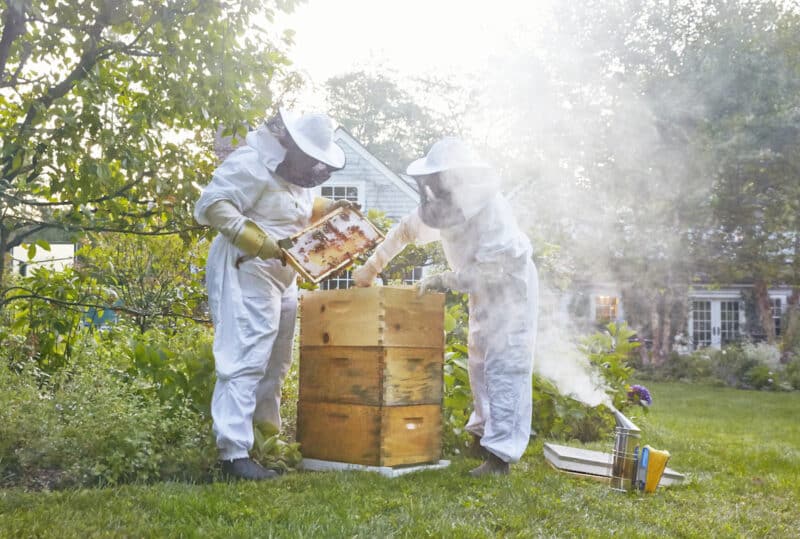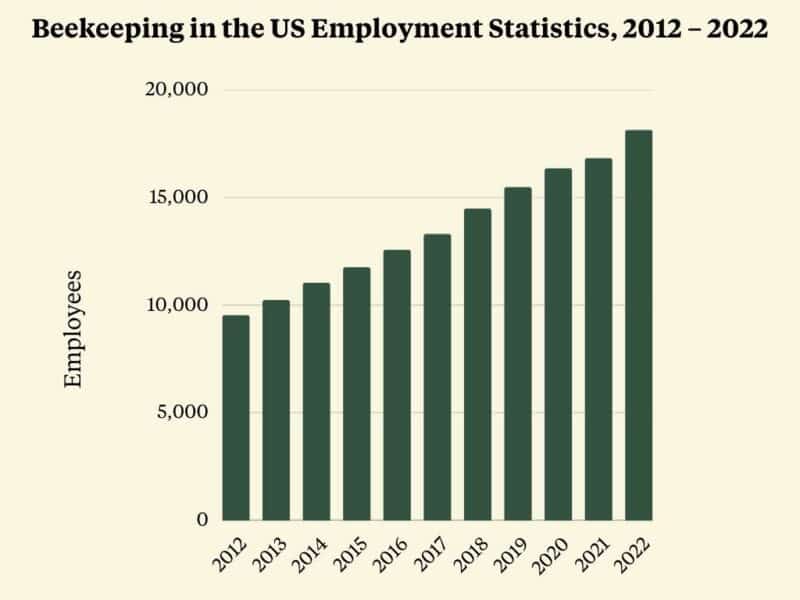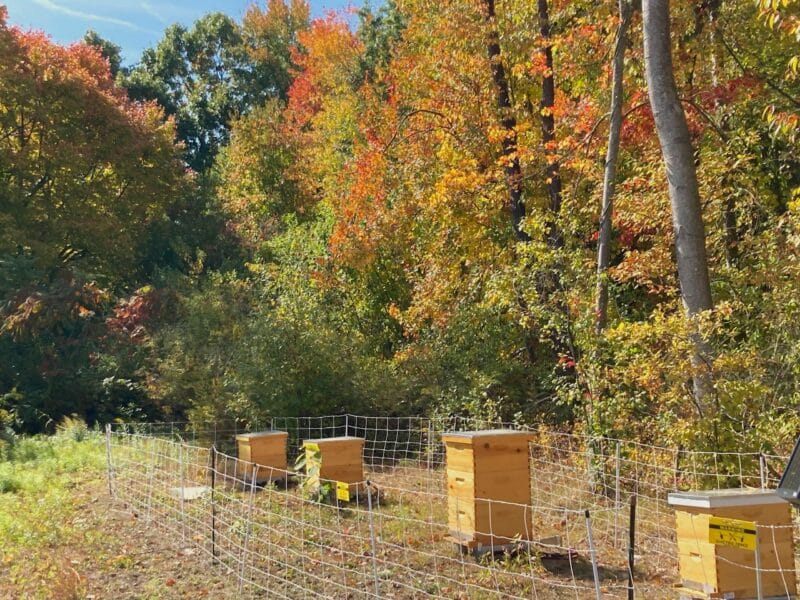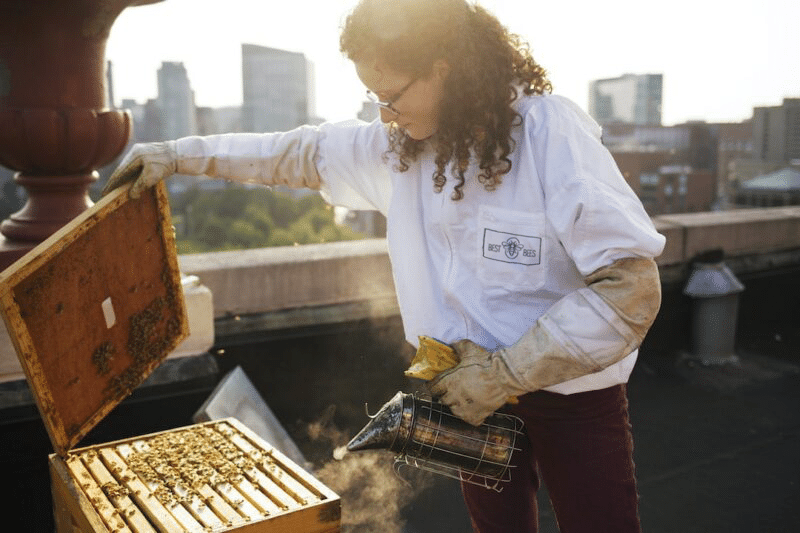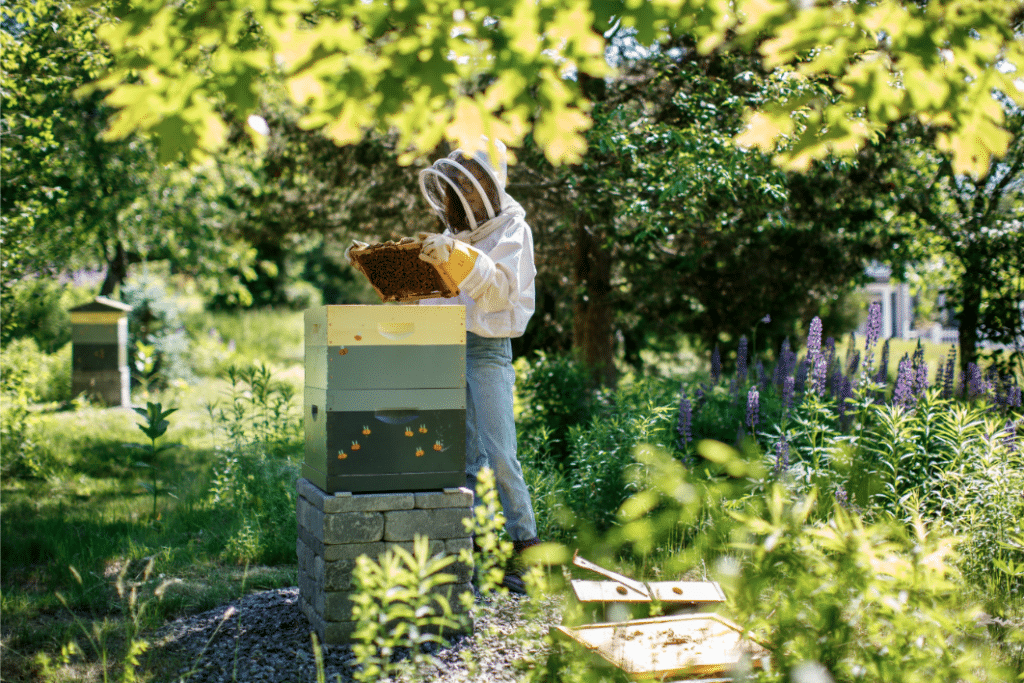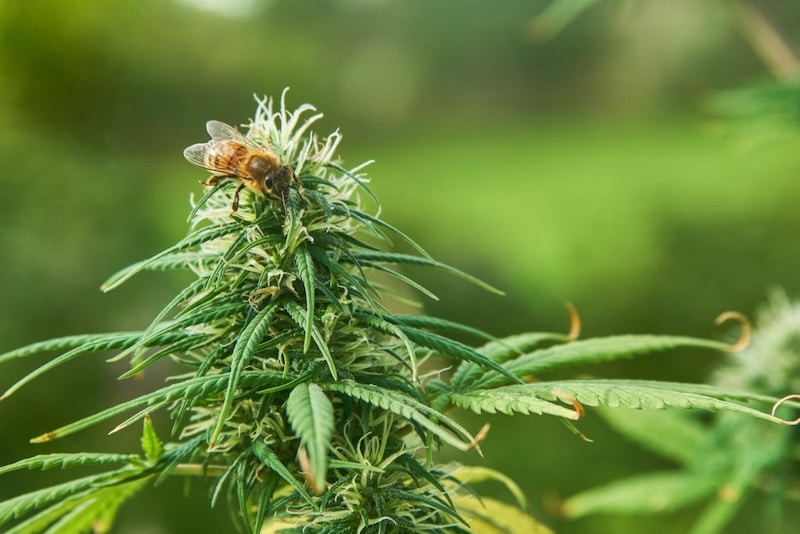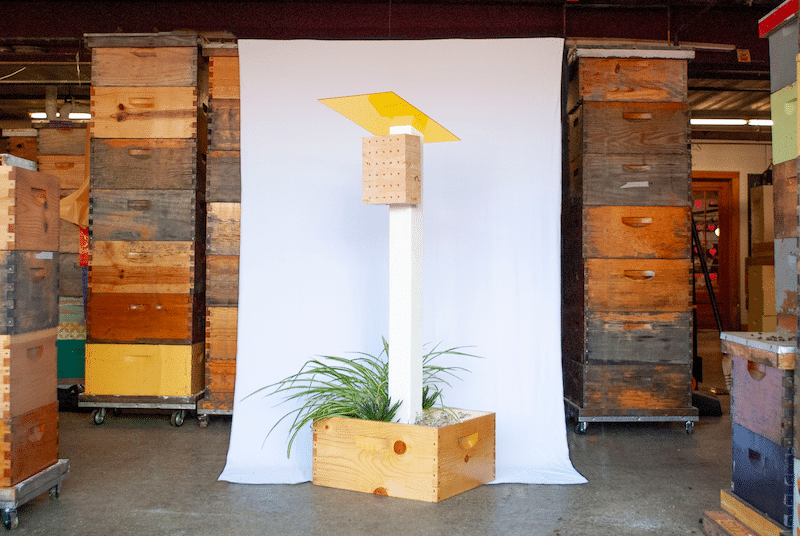Contents:
- Why Choose Beekeeping as a Career
- Career Paths for Beekeepers
- Employment Outlook for Beekeepers
- What Does a Beekeeper Do?
- Benefits and Challenges of Being a Professional Beekeeper
- What Types of Companies Hire Beekeepers?
- Educational and Certification Requirements for Professional Beekeeping
- Considerations Before Becoming a Beekeeper
- FAQs
Why Choose Beekeeping as a Career
Have you been fascinated by the natural world since childhood? Do you enjoy working outside? Are you concerned about the environment? Would you like a job where you learn something new, every day? Is career flexibility important? If so, then beekeeping may be the perfect job for you.
As a beekeeper, you’ll be intimately engaged with the natural world. You’ll do most of your work outside. Nurturing and protecting essential pollinators, your actions will have immediate positive benefit for the environment. With new challenges arising every day, your understanding of bees and the environment will grow and grow. As a beekeeper, you can run your own business or work for someone else, work in the country, suburbs or the city, and be employed anywhere you’d like to live, as bees are kept in every country on earth. Depending on whom you work for, you may have flexibility in when you work as well.
Career Paths for Beekeepers
Now, let’s get into how to become a beekeeper. There are three common types of employment for professional beekeepers:
1) you can choose to work for yourself, keeping you own hives and selling the honey you harvest;
2) you can work for a commercial beekeeping /honey production firm; or
3) you can work for a professional beekeeping service, such as the Best Bees Company.
There are pros and cons to each path. Working for yourself gives you maximum flexibility but will require capital and time to build a profitable business. Working for a commercial beekeeping company may offer the highest initial pay, but will require you to travel constantly, servicing agri-businesses that need bees to pollinate their crops for a short period each year. Working for a bee service company like Best Bees is a great place to start your career, learning from professionals and building knowledge and experience that will help you advance with them or start your own beekeeping business.
Employment Outlook for Beekeepers
There are currently more than 100,000 beekeepers in the U.S. Most of these are considered hobbyist beekeepers; they keep bees primarily for enjoyment, not income. In 2022 there were 18,127 people employed as professional beekeepers — an increase of almost 100% since 2012.
There are no projections available for beekeeping employment over the next ten years, but if the honey industry is a good indicator, where growth is expected to increase by more than 5% per year, there should be a steady increase in demand for professional beekeepers for the foreseeable future.
(Source: IBIS World https://www.ibisworld.com/industry-statistics/employment/beekeeping-united-states/)
What Does a Beekeeper Do?
Regardless of which beekeeping path you choose, your daily activities will be similar. Over the course of the year, though, your daily beekeeping tasks can vary considerably depending on seasonal needs and the condition of your hives.
“I didn’t realize the variety of tasks I’d face over the course of the year!” reports first year beekeeper Rachel Zarrow. “It’s a more dynamic job than I expected, very different in each season. I enjoy learning, and I learn something every day!”
BEEKEEPING IN THE SPRING
Spring is the busiest season for beekeepers, who have their hands full checking on hives to see how they fared over the winter, installing new hives, replacing colonies that failed to overwinter, and providing the care needed to assure each hive gets the best possible start on the season.
As a beekeeper, a typical day in early spring could include visits to a dozen different hives (fewer if you’re servicing hives in different locations and must drive to each site), opening each hive, cleaning out dead bees, assessing colony size, health and remaining food stores, and providing supplemental food if needed.
Moving into mid-spring, typical days are spent setting up new and replacement hives. With new hives this will include choosing optimal sites, setting up hives, inserting frames inside them, and then installing new colonies. With replacement hives, you’ll be cleaning out dead bees from the old hive and replacing old frames with clean frames before installing new colonies. As spring progresses, your daily activities will shift to monitoring and caring for your hives—checking on each colony every 3-4 weeks to assess their growth and the food they’ve been able to acquire on their own during the prime nectar flow.
In late spring, you’ll be watching robust colonies for signs of swarming, and when this looks like it’s about to occur, you’ll split the hive, relocating half the colony and its new queen to a separate hive. In some cases, you may find that half the colony has already swarmed and has attached itself to a post or tree, in which case you’ll capture it and transfer the swarm to a new hive.
BEEKEEPING IN THE SUMMER
While much of your time may be spent each day in the summer monitoring and providing basic maintenance to your hives, it’s also a time for troubleshooting. This might include providing water during times of drought, replacing weak or missing queens, or treating hives with pest infestation. Depending on how successful your colonies are at foraging, you might harvest honey in late June or mid-September from strong producing colonies, or provide supplemental feeding to those that are struggling.
“Beekeeping is such a problem-solving oriented job, so it’s rewarding to have that be your everyday.”
— Best Bees beekeeper Caitlin Duennebier
BEEKEEPING IN THE FALL
In the early fall you’ll check on your hives, and if there’s a surplus of honey after the last nectar flow, you’ll harvest a portion of it from the combs. Back at your beekeeping base you’ll process the honey, running it through a centrifuge to separate out any extraneous materials and then pouring it into sterilized containers. As the size of your colonies naturally shrink in preparation for winter, you’ll reduce the size of the hives to one or two boxes.
In the late fall, you’ll prepare your hives for winter. This will include treating any hives that show signs of varroa mite infestations with formic acid, adding an insulating layer to the top of the hive, rearranging the frames to move the brood to the top where the most heat will be retained, and inserting an entrance reducer to minimize heat loss. If needed, you’ll provide supplemental feeding.
BEEKEEPING IN THE WINTER
Unless you’re beekeeping in areas where honey bees are active year-round, such as California or South Florida, your winter days will be relatively quiet. You’ll spend some time cleaning and repairing unused hives and frames back at your base. If there’s mild weather mid-winter, you may check on your hives to see if they’re in good health and gauge the extent of their remaining honey stores. You may provide supplemental feeding if needed.
Benefits and Challenges of Being a Professional Beekeeper
Most beekeepers love their work and claim many benefits and only a few challenges. Here’s what three beekeepers at Best Bees have to say about why they like beekeeping:
“I love the job, especially working outside and seeing so many different parts of the Bay Area — from Napa to San Jose, there are so many different ecosystems. It’s never boring!” says beekeeper Rachel Zarrow. “It’s a great job for me, because of the flexibility,” she adds. “I’m also a writer — many beekeepers I work with have other jobs, other projects, and beekeeping allows us to do both.”
“I’ve always been attracted to climate causes, and beekeeping felt like the most accessible way to make a change,” says beekeeper Daniel Ephlin. “Beekeeping makes you think about your environment and your surroundings in a different way, inspiring you to make little changes in more areas in your life.”
“My favorite part is having my own route, getting to visit the same hives throughout the season and see your efforts throughout the season reflected in the hives that you’ve cared for,” says beekeeper Caitlin Duennebier. “When you visit the same hives on your routes, you form a relationship with them – they’re kind of like pets you take care of!”
Working as a beekeeper for a service company like Best Bees has an additional benefit: contact with clients. When Best Bees beekeepers go out to service clients’ hives, they often go out in teams, with a mentor training a new beekeeper. When on site they talk about the work, and have an opportunity to talk with clients as well, answering questions and explaining their work.
“My favorite thing on the planet is getting to talk to new beekeepers and new clients about their bees!” exclaims Daniel. “I love getting the chance to talk to other people and turn them into crazy bee people just like me!”
The one challenge cited often by beekeepers is the need for flexibility and quick decision making. “Beekeeping involves in-the-moment problem solving,” says Rachel. “I learned early on that I have to expect the unexpected. To be a good beekeeper I have to be flexible and adapt in real time. Beekeeping is good practice in accepting what you can and can’t control!”
What Types of Companies Hire Beekeepers?
While most beekeepers work independently, there are a growing number of employment opportunities for beekeepers with for-profit companies and non-profit organizations. These include working for commercial beekeepers such as Royalday Ho and Skava, honey producers such as Adee Honey Farms, bee service companies like The Best Bees Company, and bee researchers, such as The Bee Lab and Carl Hayden Bee Research Center.
Educational and Certification Requirements for Professional Beekeeping
No formal education is required to practice beekeeping. Most beekeepers take a basic course offered either on-line by educational institutions such as Cornell, or through a local beekeeping organization, and then gain practical experience setting up and maintaining their own hives, or working for a firm such as Best Bees, which offers on-the-job training.
Those who are serious about beekeeping as a career often go on to seek certification as a Master Beekeeper. This entails working for 3-5 years as a beekeeper, taking additional courses, and passing a certification exam.
Considerations Before Becoming a Beekeeper
While not extremely physically challenging, if you want to be a beekeeper, you’ll need to be in reasonably good physical shape, as you’ll be expected to carry beekeeping equipment to hive sites, including bee boxes, frames and platforms for hives, such as stone slabs or cinder blocks.
You must also be comfortable working in all kinds of weather, as the majority of your time beekeeping will be spent outside. You won’t work outside during severe weather, but will find yourself dealing often with light rain, cool mornings in spring and fall, and hot days in the summer. It can get quite warm inside a bee suit in August!
While no one likes being stung, occasional bee stings are part of the job. Most new beekeepers report being afraid of stings at first, but once stung a few times, come to realize that honeybees are not aggressive, and their stings are more annoying than painful. Some people, though, are severely allergic to bee stings. If you have a severe allergy, this might not be the career for you. If you’ve never been stung by a bee, consult your doctor about an allergy test.
FAQs
Q: How big is the field, and will there be more beekeeping jobs in the future?
A: There are more than 18,000 people employed as beekeepers in the U.S. today. The demand for beekeepers has been growing steadily and could increase by more than 50% over the next 10 years.
Q: Where can you work as a beekeeper?
A: While most beekeepers work on their own, you can find employment at a commercial beekeeping company, honey producers, farms, bee keeping service companies, and bee research organizations.
Q: Do you need special education to become a beekeeper?
A: No. You can take courses on-line and through local beekeeping associations that will teach you the basics, then learn through managing your own hives or through an on-the-job training program.
Q: What challenges do beekeepers face?
A: Beekeepers work outside, in all kinds of weather. They are occasionally stung by bees. The work can be somewhat physically challenging. They need to be prepared to assess situations and problem solve on the fly.
Q: What are the benefits of working as a beekeeper?
A: Working outside, being part of the natural world, having a positive impact on the environment, learning something new every day, traveling to different sites, having work flexibility are all benefits cited by professional beekeepers.




